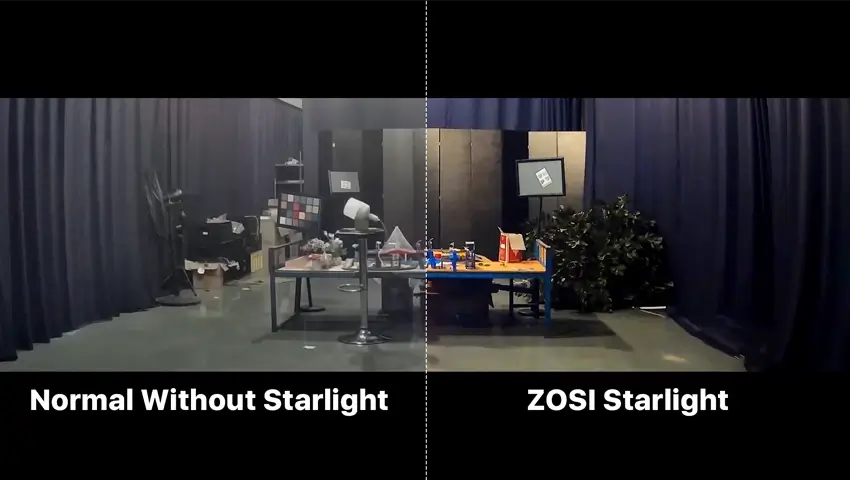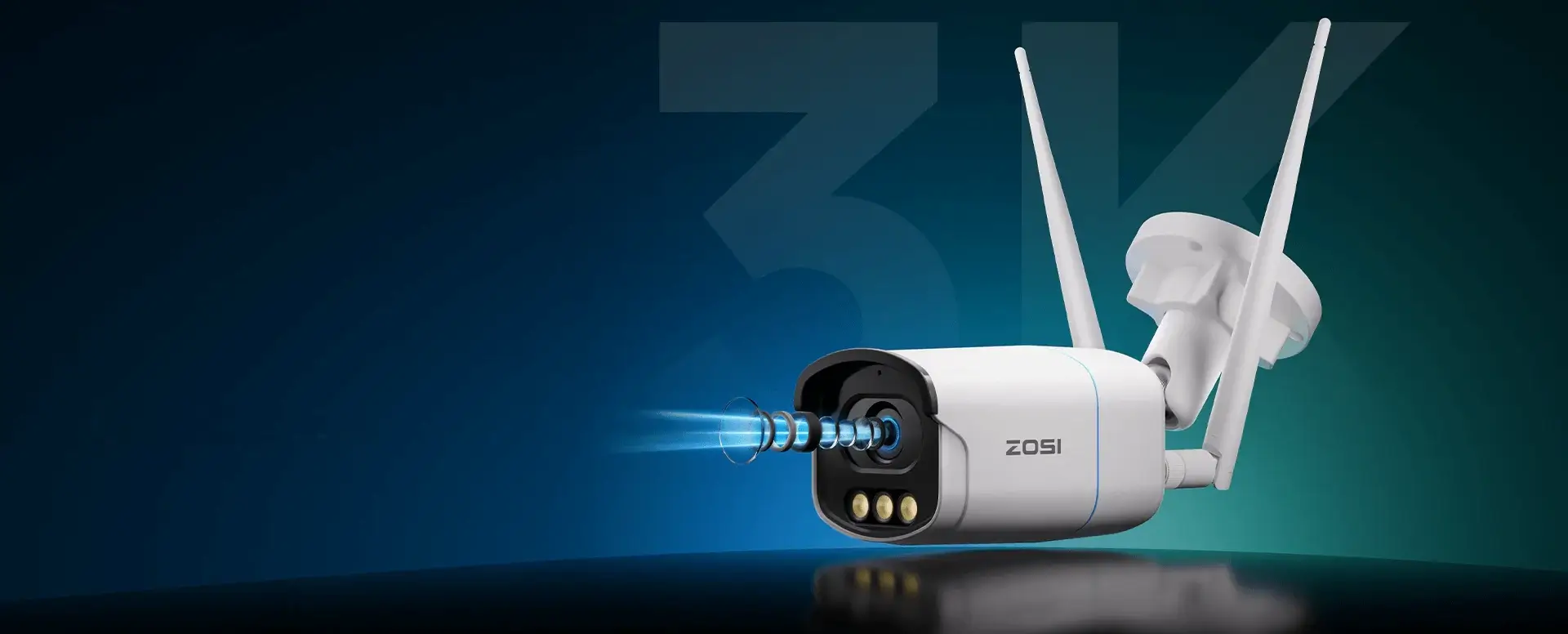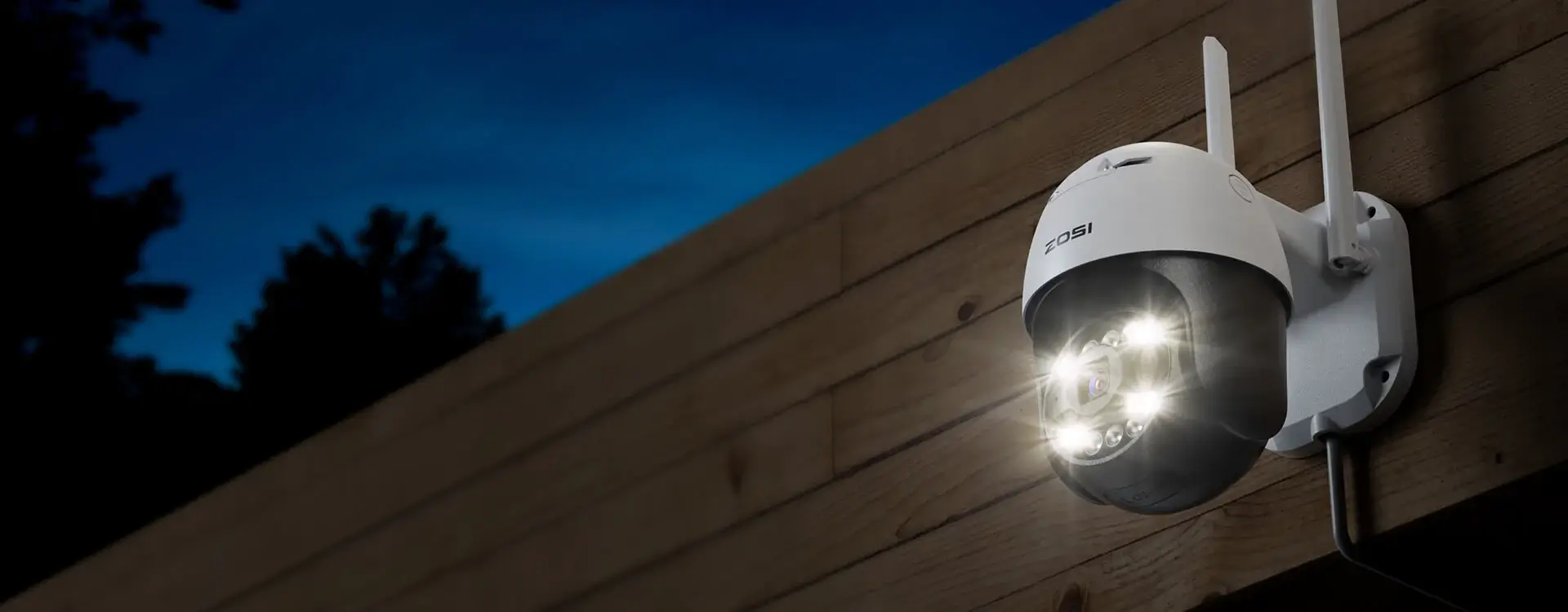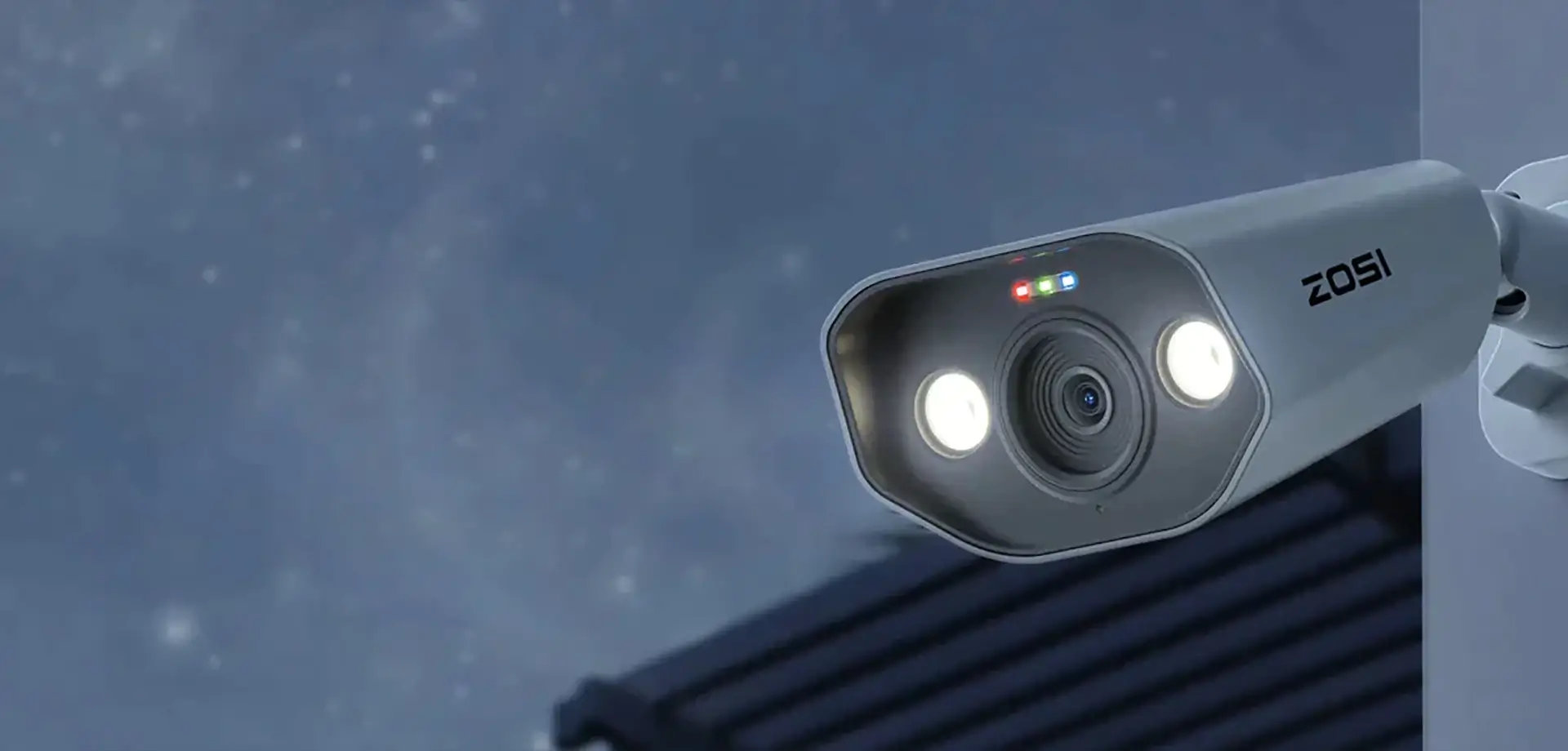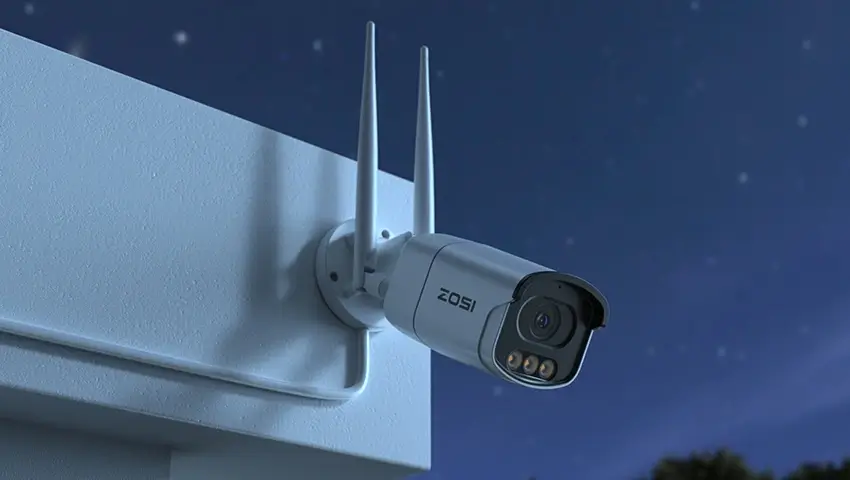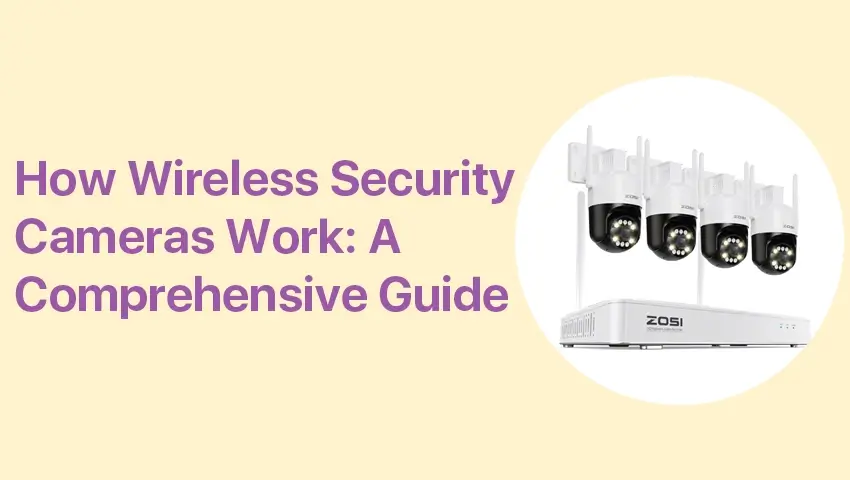Do you need a security camera that captures clear and sharp photos and videos even at night? If so, a starlight camera is the perfect solution for you.
Starlight cameras are advanced night vision security cameras specifically designed to capture high-quality video and images in low-light conditions. This makes them an excellent choice for monitoring dark environments. While primarily used for surveillance, starlight cameras are also ideal for astrophotography and wildlife observation.
Curious about what starlight cameras are, how they work, and which models are the best? Keep reading to discover all you need to know!
Contents
What Are Starlight Cameras?
Starlight cameras are specialized security cameras that utilize advanced image sensor technology to capture high-quality color images even in low-light conditions. These cameras are equipped with an infrared cut filter (ICR) that automatically switches to night mode when there isn’t enough light to produce clear color images. In night mode, the IR cut filter disengages, allowing both infrared and visible light to reach the image sensor. This enhances night vision capabilities, making these cameras perfect for security purposes even under weak starlight illumination.
Originally developed by the US military for battlefield use, starlight cameras have since been adapted for a broad range of civilian applications. They are commonly used for security and surveillance due to their ability to deliver clear images without the need for artificial lighting. Available in various sizes and styles, starlight cameras are versatile and suitable for multiple uses.
To put it in perspective, the human eye struggles to identify objects when illumination drops below 20 lux. Starlight cameras, however, offer exceptional sensitivity, delivering sharper and clearer images than the human eye can perceive, even in near-zero lux conditions.
Illuminance Levels and Corresponding Environments:
- 0.0001 lux: Moonless, overcast night sky (starlight)
- 0.05–0.3 lux: Full moon on a clear night
- 3.4 lux: Dark limit of civil twilight under a clear sky
- 20–50 lux: Public areas with dark surroundings
- 100 lux: Very dark overcast day
- 400 lux: Sunrise or sunset on a clear day
- 1000 lux: Overcast day; typical TV studio lighting
- 10,000–25,000 lux: Full daylight (not direct sun)
- 32,000–100,000 lux: Direct sunlight
Starlight cameras transform your night-time surveillance by providing unmatched clarity, making them a reliable choice for any low-light environment.
How Do Starlight Cameras Work
Starlight cameras are cutting-edge night vision devices that harness starlight and other natural light sources to deliver clear imaging in low-light conditions. They collect and amplify light from stars, the moon, and other nocturnal illumination to provide images where traditional night vision cameras might fail.
The secret behind their remarkable performance lies in advanced starlight sensor technology and sophisticated noise suppression, which together ensure exceptional sensitivity and superior night vision clarity.
Much like the human retina, the starlight sensor is highly sensitive to light. The quality of the image improves as the sensor gathers more light. However, starlight cameras go a step further by incorporating larger sensors, wider apertures, and reduced shutter speeds to capture sufficient light. This makes it possible to clearly identify faces and license plates even in near-total darkness—something beyond the capabilities of the human eye.
Key Components and Technology
- Larger Lenses and Sensors: A starlight camera equipped with a larger lens can collect more light, resulting in superior image quality. These cameras often use sensors that are 1/1.8″ or larger. While smaller than those in traditional cameras, they are significantly bigger than the sensors found in most smartphones, allowing more light capture and better performance in low-light conditions.
- Sensor Types: Starlight cameras typically use charge-coupled device (CCD) sensors or complementary metal-oxide-semiconductor (CMOS) sensors. CCD sensors are renowned for producing less image noise and offering a wider dynamic range, making them ideal for applications like astrophotography. CMOS sensors, however, are more common in home surveillance cameras due to their affordability and efficiency.
- Noise Reduction and Cooling: To further enhance image quality, starlight cameras employ cooling mechanisms that reduce noise, allowing for longer exposure times essential for capturing starlight. This cooling feature is particularly useful for achieving clear, detailed images in extreme low-light environments.
- Comparisons and Choices: While infrared and color night vision cameras are also available, starlight cameras stand out for their ability to provide high-quality, color images in low-light conditions without relying on artificial lighting. For a comprehensive comparison of different night vision security cameras, you can refer to our detailed guide.
Starlight cameras combine sophisticated technologies and components to deliver unparalleled night vision performance. Whether for security surveillance, astrophotography, or other low-light applications, starlight cameras offer a reliable and superior solution.
IR Night Vision V.S. Starlight Night Vision
IR Night Vision: IR night vision essentially captures images in black and white. Infrared (IR) security cameras emit high levels of infrared light, which reflects off objects and is converted into visible black-and-white images. This method, while functional, lacks the detail and color accuracy of more advanced night vision technologies.
Starlight Night Vision: Starlight night vision offers superior image clarity and quality compared to typical IR night vision. Starlight cameras leverage advanced sensors to maximize natural light, providing color night vision in low-light conditions where other cameras would switch to IR mode. Think of starlight night vision as a significantly clearer and more advanced version of IR night vision.
Starlight Vision V.S. Full-Color Night Vision
It’s a common misconception to equate starlight night vision with full-color night vision. While starlight cameras do provide high-quality night vision, they do not always deliver color images.
In extremely low-light conditions, starlight cameras often switch to black and white mode to maintain clarity for details like human faces and license plates. Conversely, full-color night vision cameras use built-in spotlights to illuminate the view, providing color images even in total darkness. Some cameras keep their spotlights on all night, functioning like streetlights, while others have motion-activated spotlights to deter potential intruders.
Starlight Vision V.S. Aurora Lux Night Vision
Aurora Lux is Zosi’s latest advancement in color night vision technology, designed to offer true full-color images even in very low-light environments. Aurora Lux cameras feature an F1.0 super aperture and a highly sensitive 1/1.8” image sensor to deliver clear, accurate color imagery without additional lighting, minimizing light pollution and disturbance.
Unlike traditional starlight cameras that may switch to black and white mode in extreme darkness, Aurora Lux cameras continue to capture vibrant color images, maintaining clarity and detail. These high-tech cameras ensure you can see every detail in dimly lit areas without relying on spotlights.
Discover the Latest in Night Vision Technology
The new Zosi Aurora Lux series has arrived, bringing you unmatched full-color night vision capabilities. Interested in true full-color night vision technology? Check out our comprehensive guide on Aurora Lux technology for more information.
Pros & Cons of Starlight Cameras
In video surveillance, image clarity is paramount. It determines your ability to identify a trespasser’s face, a car’s license plate number, clothing colors, and other crucial details at night. While starlight cameras excel in providing superior night vision compared to traditional security cameras, they do have some drawbacks. Let’s explore the pros and cons of starlight cameras.
Pro
1. Superior Clarity:
Starlight cameras feature highly sensitive sensors and specialized lenses to deliver exceptional night vision in HD resolution, such as the popular 1080p models on the market. This advanced technology allows you to see license plates and faces at a distance clearly, even when other cameras struggle to capture any details. Though starlight cameras may switch to black and white mode in extremely low-light conditions, their image quality remains impressive, whether in color or monochrome.
2. Extended Viewing Range:
Unlike IR cameras that rely on infrared light reflection, starlight cameras utilize natural ambient light from the environment, enabling them to see much further. They can capture details like people across the street or distant signboards, beyond the reach of IR or street light illumination.
Con
1. Higher Cost:
Starlight cameras, equipped with advanced STARVIS sensors, are generally more expensive than regular night vision cameras. Here’s a snapshot of the price range for comparison:
| Camera Type | Price |
|---|---|
| 1080p starlight cameras | $110 ~ $430 |
| 1080p IR cameras | $30 ~ $122 |
| 4MP starlight cameras | $130 ~ $400 |
| 4MP IR cameras | $50 ~ $194 |
Despite the higher cost, the superior image quality and additional details provided by starlight cameras make them a cost-effective investment. They can also save you money on additional external lighting due to their excellent low-light performance, making them a worthy option for enhancing home security.
2. Potential for Motion Blur:
Starlight cameras utilize longer shutter speeds to capture more light, which may result in motion blur when objects move quickly. However, this issue isn’t universal. Choosing a reputable brand known for high-quality starlight cameras can help you avoid motion blur and ensure crisp, clear images.
Best Starlight Night Vision Camera Alternatives
When it comes to home security, choosing a camera with color night vision is crucial for clear identification of details in low-light conditions. Although starlight security cameras have significantly improved night vision quality, many well-known brands still prefer using spotlights for full-color imaging at night. However, Zosi’s Aurora Lux technology provides an exceptional alternative for true color night vision, even in extreme darkness. Below are some top recommendations for Zosi color night vision cameras and their competitive pricing:
Best True Full-Color Night Vision Camera: Zosi C186
Zosi’s C186 camera, equipped with cutting-edge Aurora Lux technology, is a top choice for true full-color night vision. Featuring an F1.0 super aperture and a 1/1.79” highly sensitive image sensor, the C186 delivers 5MP resolution footage at night in true color.
As a PoE (Power over Ethernet) device, it is easy to install and operational right out of the box. The C186 supports 24/7 continuous recording, scheduled recording, and motion-triggered recording. Enhanced with AI technology, this smart IP camera can distinguish people, vehicles, and pets.
5MP AuroraLux Security Camera - C186
- 3K/5MP Super HD
- AuroraLux True Color Night Vision
- 3000K Neighbor-Friendly Warm Light
- Smart Person/Vehicle Detection
- Light & Siren Deterrence
- Two-Way Audio Talk
- 128GB SD & PoE NVR
- IP66 Waterproof Design
Priced at $59.99, the Zosi C186 offers a reasonably competitive option compared to other high-end starlight cameras.
Best Wireless Color Night Vision Camera: Zosi C296
The Zosi C296 provides excellent wireless starlight night vision with a quality 1/3″ CMOS sensor, 6 IR LEDs, and 4 spotlights. This combination ensures clear, full-color images and videos, regardless of day or night. The camera’s bright spotlights effectively eliminate the challenges of capturing clear footage in the darkness.
C296 - Pan Tilt IP Security Cameras
- 4K Ultra HD/5MP Super HD
- Starlight Color Night Vision
- Pan & Tilt
- PoE/WiFi Connection
- Light & Siren Alarm
- Upgraded AI-Powered Detection
- 2-Way Audio
Best PoE Color Night Vision Camera: Zosi C182
The Zosi C182, leveraging PoE technology, sends both data and power through a single network cable, offering stable 24/7 full-color recording day and night. This camera features a 1/2.8″ CMOS sensor, 5 spotlights, and delivers stunning 4K 8MP resolution.
The Zosi C182’s advanced color night vision ensures that you won’t miss any important details, whether protecting against burglars, monitoring remote sheds, or catching vandals in the act. Its robust capabilities make this PoE camera an invaluable asset for comprehensive home security.
4K Starlight PoE IP Camera - IPC-182
- 4K Ultra HD/5MP Super HD
- Person/Vehicle Detection
- PoE Plug and Play
- Live View & Smart Playback
- Two-Way Audio
- Motion Activated Light & Siren Alarm
- 100ft Color Night Vision
Conclusion
Zosi’s range of color night vision cameras, particularly those utilizing Aurora Lux technology, offers some of the best solutions for nighttime surveillance. Their innovative sensors and spotlights provide unmatched visibility and detail, ensuring your home remains secure day and night. Whether you opt for the true full-color night vision of the Zosi C186 or the robust features of the Zosi C182, you can trust these cameras to capture every important detail where others might fail.
